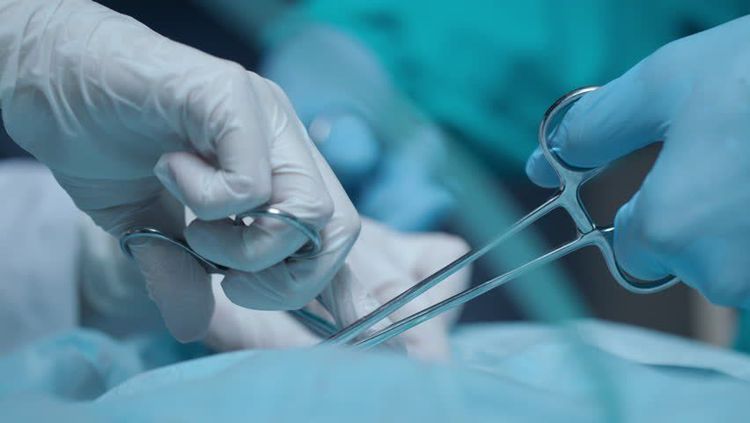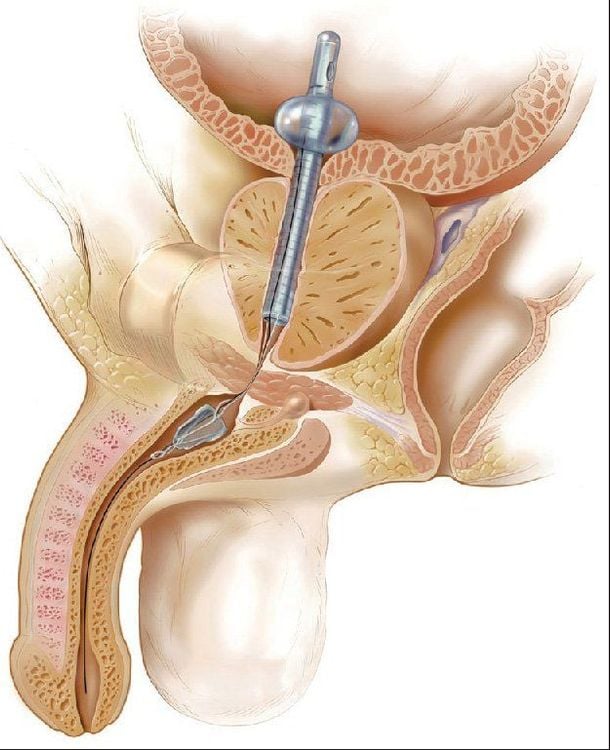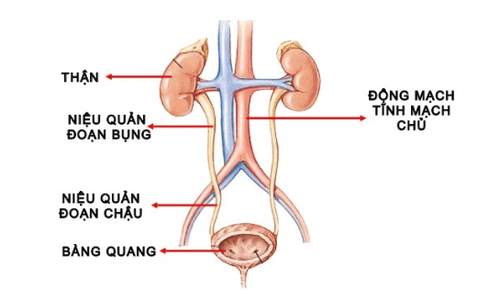This is an automatically translated article.
The article was consulted professionally by Doctor Department of General Surgery and Anesthesia, Vinmec Hai Phong International General Hospital.
Urethral stricture is a common urological disease, if there is no timely treatment to avoid complications. Based on the examination and test results, the doctor can choose the appropriate urethral treatment method, including: urethral opening, urethral dilatation, urethral incision, stenting, anastomectomy. skin flap or graft.
1. The surgery to cut - connect the urethra
1.1. Urethrectomy Anterior urethral anastomosis is a surgery performed to treat urethral strictures. The urethra is the tube that carries urine from the bladder to the urethra. A narrowing of the urethra is usually caused by scar tissue that forms after inflammation, infection, or trauma. This can cause urinary urgency, urgency, slow urine flow, and a feeling that the bladder isn't completely empty.
Urethrectomy is performed to improve urine flow in patients with scarring that causes urethral stricture.
1.2. Urethral dilation Urethral dilation is a technique to treat urethral strictures commonly performed in the clinic. After local anesthesia, the doctor will use dilatations or balloons on the catheter to increase in size to widen the urethra. Urethral dilation can be performed under endoscopic guidance
Urethrectomy often does not completely resolve this pathology and must be performed repeatedly. This is a gentle, quick solution. You will have a laparoscopy from the opening of the urethra in the opposite direction through the urethra (urethra) to the stricture. The doctor will use a specialized blade to slit all the callus tissue that is forming a tight ring that causes narrowing in some places. Then, a dilator will be used to dilate the urethra, to the highest number possible. You will be discharged from the hospital soon.

1.3 Urethrectomy (stricture resection) This procedure uses a specially designed bronchoscope to be inserted into the urethra until the stricture is reached. Next, the doctor cuts the narrowing with a blade (cold knife) or a laser at the tip of the bronchoscope. Then, a catheter is placed into the urethra for a period of time until the wound heals. The timing of catheter removal after surgery depends on the patient's response status.
1.4 Urethral stenting Stenting treatment of urethral stricture is a minimally invasive, minimally traumatic, highly effective approach. Stent placement avoids some disadvantages such as stone formation or mucosal growth into the stent barrel. However, stenting to treat urethral stricture is only suitable for very few cases, suitable for patients who cannot tolerate surgery
1.5 Urethral reconstruction Surgery to treat urethral stricture depends on the characteristics of the patient. narrow passage and the surgeon's experience. With a short narrow section, surgery can be performed to connect the two ends. When the narrow segment is long or cannot be anastomised, the doctor will use a tissue such as a skin flap or graft to widen the narrow segment.
The shaping if the narrow segment is not long, just cut the callus off. If there is any fibrous tissue left, re-stenosis is inevitable. If the narrow segment is long, it is necessary to remove the oral mucosa (cheek), to replace the fibrous segment that has been removed. The surgery usually lasts from 4 to 6 hours, because it needs to be meticulous and patient, only used to sew finer hair. About 3 weeks after surgery, the patient will have all the catheters removed and take pictures to check. The results are usually very good. You will be discharged from the hospital with the same strong urine stream as before.

2. Note before surgery to cut - connect the urethra
Before an anterior urethrotomy, you may also be treated with the following:
Catheterization: Your doctor will insert a catheter inside your bladder to drain urine. . Catheterization may be an effective option if you have short-term urethral stricture. Permanent urinary catheterization: if you have a severe urethral stricture and do not want surgical treatment, you may have the option of treatment with a permanent urinary catheter to keep your urethra open. expanding or draining urine from the bladder out through a permanent catheter. However, these procedures have many disadvantages, including the risk of bladder irritation and discomfort, as well as the risk of urinary tract infections. This method also often requires close monitoring. This procedure is often seen as a last resort and is rarely used. Balloon dilation: Your doctor will insert a balloon to widen your urethra. Sometimes more complicated strictures require open surgery with urethroplasty. You should be aware that urethral stricture may recur after surgery.
Urethral cutting - anastomosis needs to be done at reputable hospitals, Vinmec International General Hospital is one of the quality addresses you can choose. There is a team of well-trained, professional and experienced gynecologists; system of modern equipment, meeting international standards; professional service quality, bringing satisfaction and comfort to customers.
Please dial HOTLINE for more information or register for an appointment HERE. Download MyVinmec app to make appointments faster and to manage your bookings easily.













